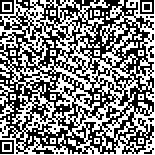| 摘要: |
| [摘要] 目的 探讨甘油三酯葡萄糖(TyG)指数与冠心病患者经皮冠状动脉介入(PCI)术后发生支架内再狭窄(ISR)的关联性。方法 通过医院电子病历系统收集2016年1月至2021年9月昆明医科大学第二附属医院心内科收治的243例冠心病患者的临床资料,其中男179例,女64例,年龄(60.92±11.13)岁,均行PCI治疗并完成术后随访。根据随访期间发生ISR情况将其分为ISR组(45例)和非ISR组(198例)。比较两组的一般临床资料、手术相关指标及PCI术前和术后的生化指标。通过二元logistic回归分析影响冠心病患者PCI术后发生ISR的危险因素。结果 ISR组吸烟、合并糖尿病人数比例高于非ISR组,差异有统计学意义(P<0.05)。两组在年龄、性别、合并高血压病、体质量指数(BMI)、Gensini评分、支架植入总数、植入支架直径、植入支架长度、多支血管病变、弥漫性病变等方面比较差异均无统计学意义(P>0.05)。在术前,ISR组的TC、TG、FBG和TyG指数水平高于非ISR组,差异有统计学意义(P<0.05)。在复查造影时,ISR组TyG指数水平和TyG指数未达标人数比例大于非ISR组,差异有统计学意义(P<0.05)。二元logistic回归分析结果显示,吸烟(OR=6.592)、合并糖尿病(OR=3.843)、复查时TyG指数未达标(OR=23.273)是冠心病患者PCI术后发生ISR的独立危险因素(P<0.05)。结论 TyG指数升高会增加冠心病患者PCI术后发生ISR的风险,PCI术后应加强患者控制TyG指数的管理。 |
| 关键词: 经皮冠状动脉介入 支架内再狭窄 甘油三酯葡萄糖指数 |
| DOI:10.3969/j.issn.1674-3806.2022.07.14 |
| 分类号:R 543.3 |
| 基金项目: |
|
| A study on association between triglyceride-glucose index and in-stent restenosis after percutaneous coronary intervention in patients with coronary heart disease |
|
CHEN Ling-ling, LI Bo
|
|
Department of Cardiology, the Second Affiliated Hospital of Kunming Medical University, Yunnan 650101, China
|
| Abstract: |
| [Abstract] Objective To investigate the association between triglyceride-glucose(TyG) index and in-stent restenosis(ISR) after percutaneous coronary intervention(PCI) in patients with coronary heart disease. Methods The clinical data of 243 patients with coronary heart disease who were admitted to Department of Cardiology, the Second Affiliated Hospital of Kunming Medical University from January 2016 to September 2021 were collected through the hospital electronic medical record system, including 179 males and 64 females, with an average age of (60.92±11.13)years. All the patients underwent percutaneous coronary intervention(PCI) and their postoperative follow-up was completed. According to the occurrence of in-stent restenosis(ISR) during the follow-up period, the patients were divided into ISR group(45 cases) and non-ISR group(198 cases). The general clinical data, operation-related indexes, and biochemical indexes before and after PCI were compared between the two groups. The risk factors of ISR after PCI in patients with coronary heart disease were analyzed by binary logistic regression. Results The proportion of smoking patients and diabetes patients in the ISR group was higher than that in the non-ISR group, and the difference was statistically significant(P<0.05). There were no statistically significant differences between the two groups in age, gender, complicated hypertension, body mass index(BMI), Gensini score, total number of implanted stents, diameter of implanted stents, length of implanted stents, multivessel disease, and diffuse disease(P>0.05). Before operation, the levels of total cholesterol(TC), triglyceride(TG), fasting blood glucose(FBG) and TyG indexes in the ISR group were higher than those in the non-ISR group, and the differences were statistically significant(P<0.05). During the re-examination of angiography, the level of TyG index and the proportion of the patients who did not meet the standard of TyG index in the ISR group were greater than those in the non-ISR group, and the differences were statistically significant(P<0.05). The results of binary logistic regression analysis showed that smoking(OR=6.592), complicated diabetes mellitus(OR=3.843), and substandard TyG index at re-examination(OR=23.273) were the independent risk factors for ISR after PCI in the patients with coronary heart disease(P<0.05). Conclusion Elevated TyG index may increase the risk of ISR in patients with coronary heart disease after PCI, and the management of TyG index control should be strengthened in the patients after PCI. |
| Key words: Percutaneous coronary intervention(PCI) In-stent restenosis(ISR) Triglyceride-glucose(TyG) index |

